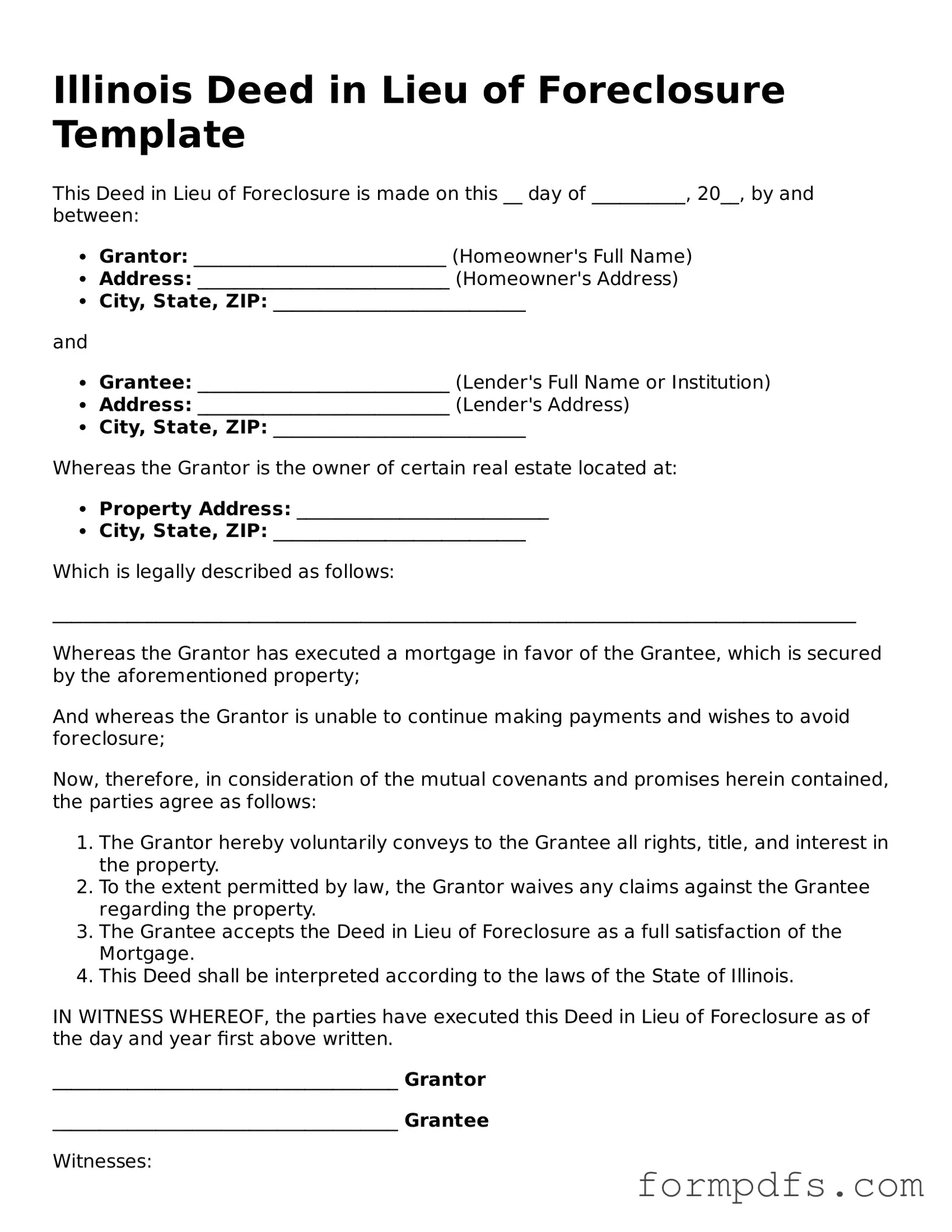What is a Deed in Lieu of Foreclosure in Illinois?
A Deed in Lieu of Foreclosure is a legal process that allows a homeowner to voluntarily transfer their property to the lender to avoid foreclosure. Instead of going through the lengthy and often stressful foreclosure process, homeowners can negotiate with their lender to hand over the property. This option can help protect the homeowner's credit score and may provide a smoother transition out of the home.
Who is eligible for a Deed in Lieu of Foreclosure?
Eligibility for a Deed in Lieu of Foreclosure generally depends on the lender’s policies and the homeowner's financial situation. Typically, homeowners facing financial hardship, such as job loss or medical expenses, may qualify. However, the property must be free of other liens, and the homeowner must be willing to surrender the property voluntarily. Lenders will often require documentation of the homeowner’s financial situation to assess eligibility.
What are the benefits of choosing a Deed in Lieu of Foreclosure?
Opting for a Deed in Lieu of Foreclosure can provide several advantages. Firstly, it may minimize the impact on the homeowner's credit score compared to a traditional foreclosure. Secondly, it allows for a more dignified exit from the property, as the process is typically quicker and less adversarial. Homeowners may also be able to negotiate terms with the lender, such as the possibility of remaining in the home for a short period after the deed transfer.
What are the potential drawbacks of a Deed in Lieu of Foreclosure?
While there are benefits, there are also potential downsides to consider. One significant drawback is that homeowners may still face tax implications. The IRS may consider any forgiven debt as taxable income, which could lead to a tax bill. Additionally, lenders may not accept a Deed in Lieu if the property has other liens, making the process more complicated. Homeowners should carefully weigh these factors before proceeding.
How does the process of completing a Deed in Lieu of Foreclosure work?
The process begins with the homeowner contacting their lender to express interest in a Deed in Lieu of Foreclosure. The lender will review the homeowner's financial situation and the property’s condition. If both parties agree, the homeowner will sign a deed transferring ownership to the lender. It is crucial to ensure that all paperwork is completed correctly to avoid any legal issues. Consulting with a real estate attorney can help navigate this process smoothly.
Can a Deed in Lieu of Foreclosure affect future home buying?
Yes, a Deed in Lieu of Foreclosure can impact future home buying. While it is generally less damaging to credit than a foreclosure, it can still remain on the homeowner's credit report for several years. This record may make it more challenging to qualify for a mortgage in the future. However, many lenders may consider the circumstances surrounding the deed and the homeowner's overall credit profile when making lending decisions.
